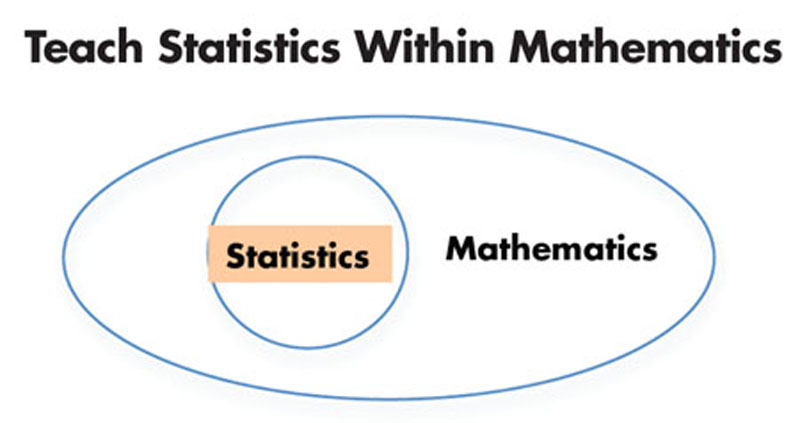Dr Khalid-Ul-Islam
Students are not born afraid of statistics; they learn to fear it! For many pupils, statistics is as ferocious as a demon. As soon as they open the Statistics book, many pupils fall asleep. Their statistics score is really low. They just give up saying that they can’t do it. Unfortunately, stat avoidance leads to a lack of expertise, exposure, and practice, making pupils uncomfortable and statistically unprepared to realize learning goals. This results in Stat phobia.
Stat Phobia may be a feeling of tension, apprehension, or fear that interferes with stat performance. An individual with stat phobia doesn’t necessarily lack ability in statistics; rather, s/he can’t perform to her/his full potential thanks to the interfering symptoms of anxiety.
Student should be reminded that stat skills aren’t learned automatically and that everyone learns at a different pace. While you may not want to allow visual distractions such as television or the internet, your children may prefer background music, or to study on the floor supported by pillows instead of sitting at a desk.
As it is well known that there is a triangle- teacher-student- parent- for the success of education, the role of each is important to eradicate stat phobia from pupils.
Statistics seldom made an impact on the normal student’s educational experience sixty years ago. Students studying social science may come upon data. Students may gather information during a science lab activity. Students would be expected to understand how to compute the mean of a set of integers in a maths classroom. The expectation that students will learn various measures of central tendency and spread, encounter theoretical and real distributions, and engage in discussions about subjects like randomness, statistical tests, and statistical significance that was previously covered at the college level is becoming more and more commonplace today.The study of statistics in grades K-12 has naturally been taken into consideration as a part of the school mathematics curriculum since it is one of the mathematical disciplines. This has several benefits since, after reading and language arts, mathematics is the second-most significant academic school subject. The linkages between statistics and common literacy, science, health, and the social sciences, however, necessitate teaching statistics across the curriculum in addition to rethinking its connections to mathematics as statistics has grown in significance.
Three premises provide the basis for the opinions in this essay. For most readers of this article, the first statement is obvious. Today, statistics may be found and used in practically every area of human endeavour. The second premise, however, is probably not accepted by all of this article’s readers. Almost all pupils can understand the essential concepts of statistics, such as variability, randomness, the laws of probability, and so forth. Even if you don’t think all students can grasp the fundamentals of statistics, I think school policies should be set up to allow everyone the chance and act as though they can. The American Statistical Association’s Guidelines for Assessment and Instruction in Statistics Education (GAISE) K-12 report is the source of the third premise. “Every high-school graduate should be able to use sound statistical reasoning in order to cope intelligently with the requirements of citizenship, employment, and family, and to be prepared for a healthy, happy, and productive life.”
Despite great advancements over the past generation, most of the world’s high school graduates do not currently possess a thorough understanding of, much alone the ability to apply, the principles of sound statistical reasoning. Only a small proportion of kids are often exposed to these concepts in many areas. At the K-12 level, statistics is not typically taught as a subject.
The fundamental problem, which I seek to address here, is how and where to teach statistics in the face of so many other disciplines vying for students’ attention. In order to sustain and advance our subject, I used a slightly historical approach to finding the solution. I looked at the past, noticed the present, and considered the future. The majority of it is American in nature.
In many classroom settings even today, the answer to this question was clear fifty years ago. Statistics was taught as part of mathematics since it was seen as a branch of mathematics, much like algebra or geometry.
The U.S. Common Core State Standards Initiative and the Trends in International Mathematics and Science Study (TIMSS) and its predecessors also represent this point of view. According to this perspective, statistics is taught during the allotted time for math. Why would somebody not consider statistics to be a branch of mathematics given that statistical formulas entail mathematics?
The most likely way for students to encounter this content would be to embed it within the mathematics curriculum rather than teaching statistics in separate units that could be easily omitted. I have long believed that all students need to encounter a significant amount of statistics in their educational experience, beginning in the earliest grades. In line with this viewpoint, I have worked on curriculum for more than 40 years, trying to tie traditional mathematical courses to relevant statistical concepts and working in the opposite direction by examining fundamental statistical concepts for the mathematics they imply.
The author is Research Scholar (Statistics)
Trending Now
E-Paper


